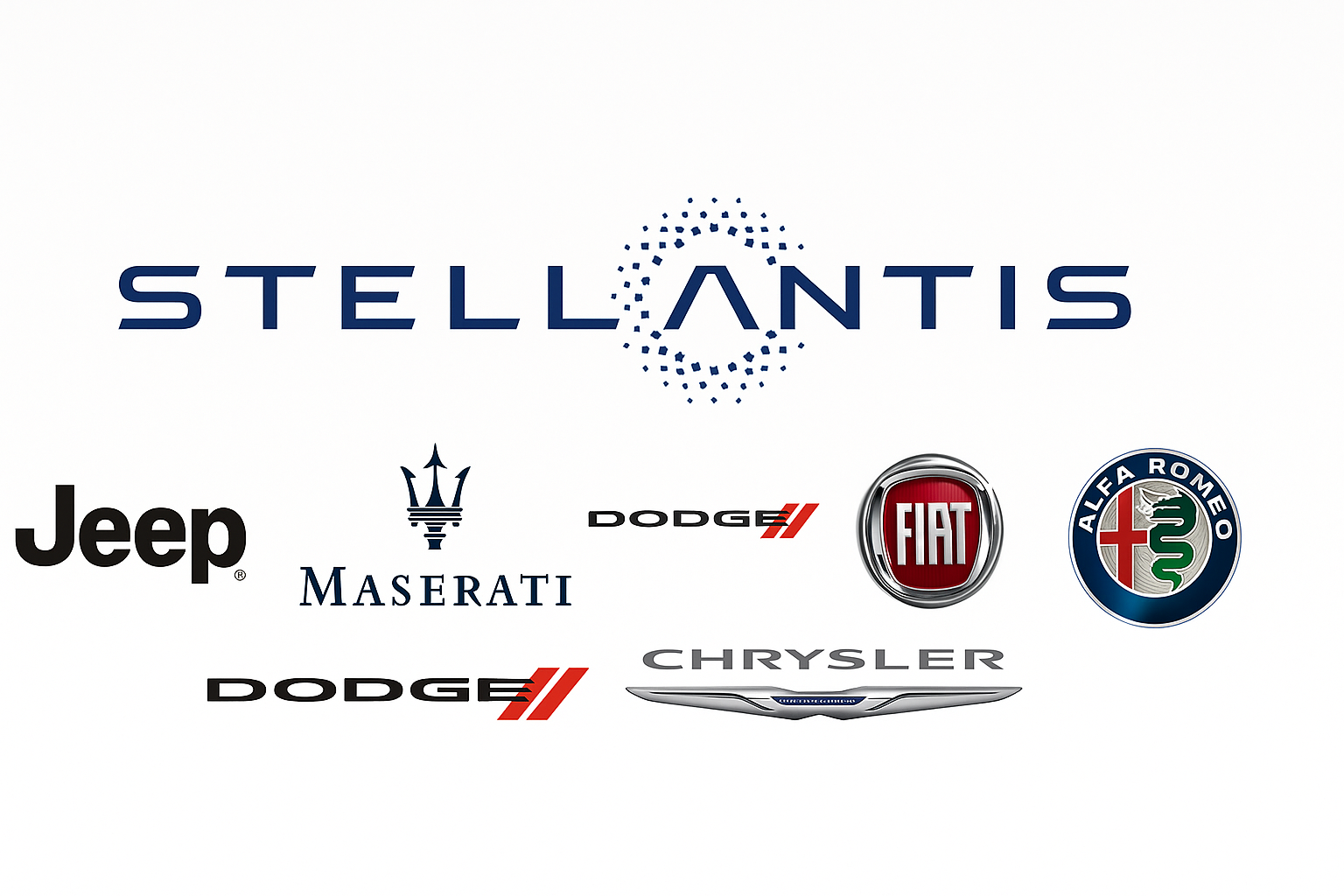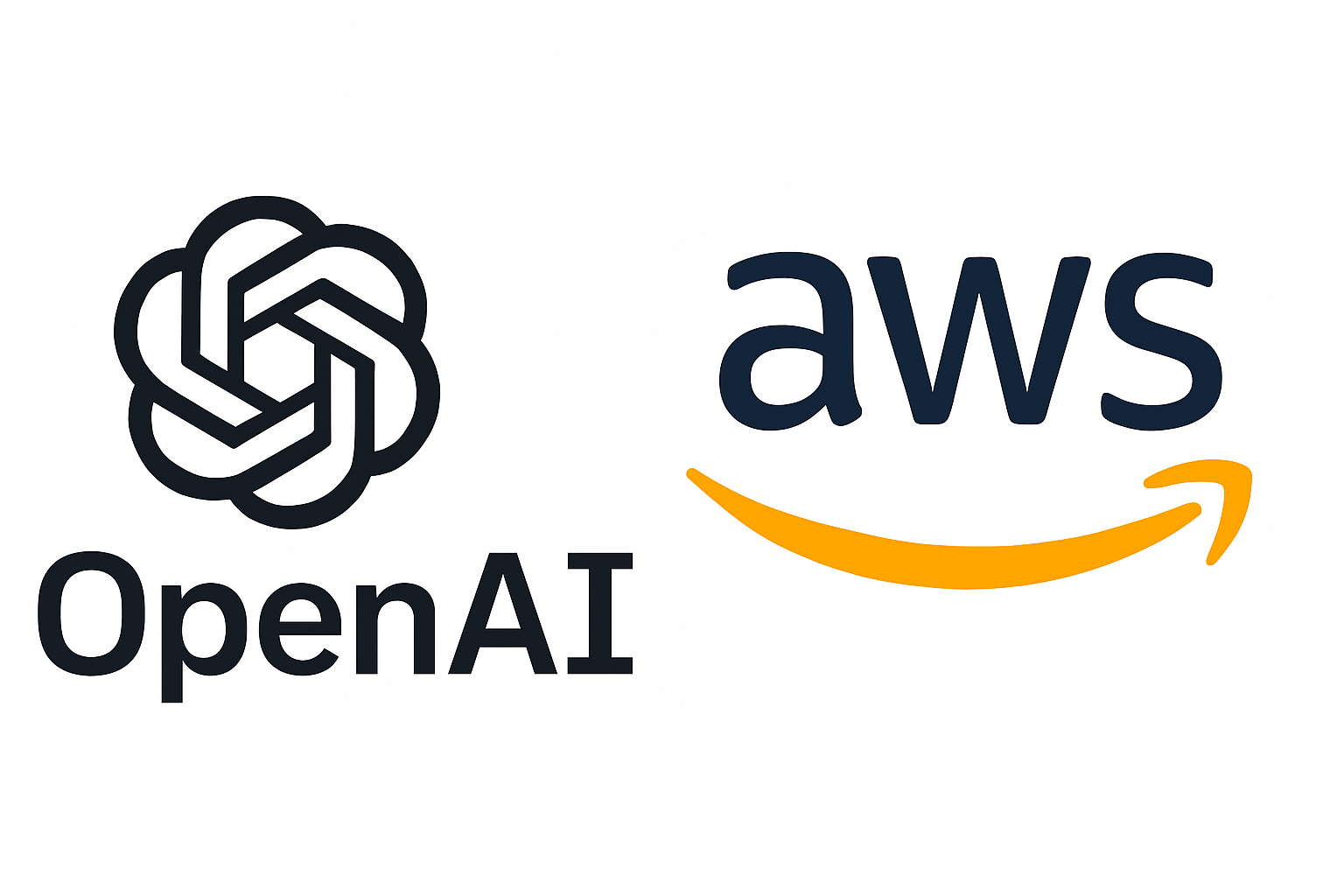Non classé
From Automation to Agency: A New Era of Supply Chain Intelligence – How Agentic AI is Redefining Value in Manufacturing Supply Chains
Published
1 jour agoon
By

Across manufacturing and process industries, supply chains are operating under intense pressure. Demand and market volatility, disruptions in materials, and a persistent need to “do more with less” have made supply chain agility critical.
Manufacturers have quickly embraced automation on the shop floor, including drones, robots, and sensors optimizing production lines. Yet when it comes to supply chain planning and execution, many organizations still rely on manual analysis, human judgement and delayed decision-making cycles. This is where artificial intelligence, and especially Agentic AI, is emerging as a transformative force.
Modern supply chains are extraordinarily complex. Every decision – whether to reroute shipments, hedge against raw material price changes, or adjust production schedules – ripples through a web of suppliers, logistics partners, and markets.
Traditional approaches to automation and analytics can sometimes struggle to keep pace with this speed and scale. Far too often, planners today are saddled by outdated technology and processes which means they can spend days running reports, generating recommendations, and reconciling data before decisions reach leadership. By then, the window for action may already have closed.
Modern supply chain planning platforms have significantly accelerated the time to make decisions and now agentic AI has the opportunity to take this to the next level. Instead of waiting for people to request insights or write data queries, agents can act autonomously, analyzing, correlating, and recommending actions in near real time. They operate at the speed of business, turning insight into decision at machine speed. insight into decision at machine speed.
What Makes Agentic AI Different?
While most people associate AI in the enterprise with chatbots or assistants, Agentic AI is much more advanced. Beyond simply answering questions, AI agents are part of an intelligent system that perceives, reasons, and acts toward defined business goals. They learn from new data, adapt to changing conditions, and connect both structured and unstructured signals.
AI agents can operate with a goal-seeking mindset: determining not just what’s happening, but what should be done next and why.
For supply chain leaders, that means moving from reactive analysis to proactive decision making. For example, you can ask an AI agent: “Which items have the most urgent supply chain issues right now—and what’s driving them?” In just a moment, the agents can query multiple databases, correlate external data such as commodity price swings, and return a recommendation complete with impact analysis and confidence levels.
Agentic AI Use Cases
Agentic AI’s potential stretches across every layer of the supply chain. Some real world applications include:
Prescriptive Recommendations: Move beyond rigid “if/then” exception management. Agents can generate adaptive, open-ended recommendations based on live data, guiding planners through what to prioritize and how to act. Rather than static rules, recommendations dynamically change to meet objectives and to inject planner preferences.
Root Cause Analysis: When forecasts miss the mark or supply shortages appear, agents can trace contributing factors across demand signals, supplier performance, and market data, explaining why it happened and how to prevent recurrence. This rapid analysis cuts planning time cycles across S&OE and S&OP to support decision-driven, not calendar-driven schedules.
Support for Sales & Operations Execution (S&OE): Agents can monitor the environment, flag issues early and quickly suggest and orchestrate corrective actions to maintain service levels. Autonomous agents can ingest sales, market, weather, operations, shop-floor, transportation and more and then orchestrate decisions and actions (e.g. re-prioritize a work order, re-route a shipment) with internal and external parties.
Hedging Decisions: Too often, hedging is guided by memory or habit, regardless of how well the decision is performed. Agentic AI can leverage its memory of previous decisions, assumptions and outcomes to provide context to evaluate options and support better-informed decisions.
Process Manufacturing Optimization: In industries with multiple formulations, speed and temperature profiles, optimization can be overwhelming. Agentic AI can navigate this multi-variable complexity, testing scenarios and identifying optimal configurations in ways even seasoned planners find difficult to replicate manually.
Crucially, Agentic AI also helps reduce human decision-making fallacies that often undermine supply chain performance. People tend to overvalue recent experiences, assume past successes guarantee future success (gambler’s fallacy), or cling to outdated strategies due to prior investment (sunk-cost bias). Agentic systems, by contrast, evaluate every scenario through an objective data-backed lens. And it can learn from feedback and historical outcomes.
Agent-based simulations can also model and stress-test supply chain scenarios using probabilistic reasoning to present evidence-based scenarios. This means planners can explore multiple “what-if” scenarios instantly, understanding both potential outcomes and the probability of success, as well as the risk and value created by decisions.
Building Trust Through Explainability
For AI to drive value, it must be trusted. In particular, in manufacturing environments with deep complexity and decisions impacting safety, compliance, and profitability – explainability is non-negotiable.
It’s key to embrace a planning solution where Agentic AI emphasizes governance through human-in-the-loop controls, and every recommendation is transparent, traceable, and subject to review before execution. Decision-makers can see why a specific plan was generated, which data informed it, and how alternative actions might affect outcomes.
This combination of autonomy and accountability helps organizations adopt AI responsibly. It ensures that technology amplifies human judgment, rather than replacing it. Over time, consistent, explainable recommendations build confidence, transforming skepticism into strategic trust.
Readiness and Culture
Beyond technology, adopting the latest AI innovations requires organizational readiness. Teams must be empowered to collaborate with AI, interpreting recommendations and shaping continuous improvement. This may require skills development to achieve AI fluency, and a culture that values experimentation and learning.
To build a strong culture around AI, leaders should ask:
Are we fostering a culture that views AI as a partner in problem-solving rather than a threat to established roles?
Do our teams understand how AI decisions are made and when to challenge them?
Are we recruiting or developing talent with AI expertise?
Agentic AI is set to transform decision speed and confidence. But success starts with clarity. Leaders must define the problems to solve, and the value they want to create. It’s not about chasing hype, or deploying AI for its own sake, to see what happens. It’s about focusing intelligence where it delivers the most impact, reducing lag time, increasing resilience, and unlocking new performance frontiers.
Is your organization ready to incorporate AI into your decision-making DNA?
About the Author:
Matt Hoffman is the Vice President of Product and Industry Solutions at John Galt Solutions. Matt specializes in delivering transformational from analysis through execution across a diverse range of clients in manufacturing, distribution, and retail. Matt is committed to ensuring that processes drive solution adoption, resulting in measurable outcomes. Throughout his career, Matt has successfully led software implementations utilizing best-in-class supply chain planning systems, execution systems, and merchandising planning systems.
The post From Automation to Agency: A New Era of Supply Chain Intelligence – How Agentic AI is Redefining Value in Manufacturing Supply Chains appeared first on Logistics Viewpoints.
You may like
Non classé
Join us for Tomorrow’s Webinar: Building a Sustainable Supply Chain: Turning Commitments into Competitive Advantage
Published
22 heures agoon
3 novembre 2025By

Sustainability has moved beyond corporate responsibility. Today, it’s a core element of supply chain performance and brand value. Organizations across every sector are rethinking how materials are sourced, products are moved, and data is managed to reduce emissions, improve efficiency, and strengthen resilience.
Join us for an in-depth Logistics Viewpoints webinar on Sustainability in the Supply Chain, where industry leaders will share how they are embedding environmental and social responsibility into the fabric of their operations. This session will explore practical steps for achieving measurable progress — not just pledges — in areas such as supplier engagement, energy management, and circular logistics.
Key topics include:
Proven frameworks for integrating sustainability into procurement and manufacturing
Tools and metrics for tracking emissions and improving data visibility
How transparency and collaboration can reduce risk and enhance competitiveness
Lessons learned from companies leading the charge toward carbon-smart logistics
Our expert panel will focus on real-world case studies and actionable takeaways, giving attendees insights they can immediately apply to strengthen their sustainability programs.
Whether your organization is just beginning its journey or refining an established strategy, this webinar offers a roadmap to align sustainability goals with measurable business outcomes.
Register now to join us live and learn how forward-thinking companies are transforming sustainability from a compliance obligation into a competitive advantage.
The post Join us for Tomorrow’s Webinar: Building a Sustainable Supply Chain: Turning Commitments into Competitive Advantage appeared first on Logistics Viewpoints.
Non classé
Stellantis: $13 Billion, 5,000 Jobs, and a New U.S. Manufacturing Strategy, Reshaping the North American Supply Chain
Published
23 heures agoon
3 novembre 2025By

AUBURN HILLS, MI. Stellantis announced plans to invest $13 billion over the next four years to expand its U.S. manufacturing footprint. The initiative will add more than 5,000 jobs across Illinois, Ohio, Michigan, and Indiana and increase U.S. vehicle production by about 50 percent.
The investment will fund five new vehicle programs, 19 product refreshes, and a new four-cylinder engine program. It is the company’s largest single U.S. investment and signals a long-term commitment to both internal combustion and electrified vehicle platforms.
“This investment in the U.S. will drive our growth, strengthen our manufacturing footprint, and bring more American jobs to the states we call home,” said Antonio Filosa, Stellantis CEO and North America COO. “As we begin our next 100 years, we are putting the customer at the center of our strategy, expanding our vehicle offerings, and giving them the freedom to choose the products they want and love.”
“Accelerating growth in the U.S. has been a top priority since my first day,” Filosa added. “Success in America is not just good for Stellantis in the U.S. It makes us stronger everywhere.”
State-by-State Overview
Illinois: Belvidere Plant Reopening
Stellantis will invest $600 million to reopen the Belvidere Assembly Plant for production of two Jeep models, the Cherokee and Compass, beginning in 2027. The project is expected to create 3,300 jobs.
Ohio: New Midsize Truck Production
About $400 million will fund production of an all-new midsize truck at the Toledo Assembly Complex, joining the Jeep Wrangler and Gladiator lines. The move will add about 900 positions when production begins in 2028. Additional upgrades are planned across Toledo operations to support ongoing Jeep production.
Michigan: Large SUV and Dodge Durango Successor
At the Warren Truck Assembly Plant, Stellantis will invest $100 million to produce a new large SUV available in both range-extended EV and combustion formats. The launch, expected in 2028, will add 900 jobs. Another $130 million will prepare the Detroit Assembly Complex, Jefferson, for the next-generation Dodge Durango, slated for production in 2029.
Indiana: New Engine Program
In Kokomo, Stellantis will invest more than $100 million to build the new GMET4 EVO four-cylinder engine. Production is set to begin in 2026 and will add about 100 jobs.
Supply Chain and Logistics Considerations
The Stellantis plan reflects a larger trend toward regionalized manufacturing and shorter supply chains. By expanding production in the Midwest, Stellantis is reducing exposure to overseas logistics risks and shipping delays that have challenged the industry in recent years.
Reopening Belvidere and expanding operations in Toledo and Kokomo will strengthen domestic supplier ecosystems for components such as engines, drivetrains, and electronics. Adding dual powertrain lines, both EV and ICE, will require parallel material streams and more sophisticated synchronization between inbound logistics, supplier planning, and workforce scheduling.
At the same time, expansion across multiple states increases the complexity of coordination and sourcing. Tier-1 suppliers will need to adjust production capacity, labor allocation, and transportation networks to align with Stellantis’ new programs. Global lead times for critical components such as semiconductors, battery modules, and sensors remain unpredictable, requiring early-stage visibility and contingency planning.
For the broader supply chain, the challenge lies in maintaining steady component availability while scaling new vehicle lines and managing cost pressures tied to both traditional and electrified platforms.
Outlook
Stellantis operates 34 U.S. facilities across 14 states and employs more than 48,000 people. This new investment deepens that footprint and aligns with an operational goal of building greater resilience and control within the domestic production network.
For supply chain leaders, Stellantis’ move highlights the continued shift toward regional production, flexible sourcing strategies, and closer collaboration between OEMs and their supplier networks. The focus now is not just on capacity but on stability, adaptability, and execution across interconnected plants and partner
The post Stellantis: $13 Billion, 5,000 Jobs, and a New U.S. Manufacturing Strategy, Reshaping the North American Supply Chain appeared first on Logistics Viewpoints.
Non classé
OpenAI and AWS Forge $38B Alliance, Microsoft Exclusivity Ends, New Multi-Cloud AI Compute Era Begins
Published
23 heures agoon
3 novembre 2025By

OpenAI has entered into a multi-year, $38 billion agreement with Amazon Web Services, formally ending its exclusive reliance on Microsoft Azure for cloud infrastructure. The deal, announced today, represents a fundamental realignment in the cloud compute ecosystem supporting advanced AI workloads.
Under the agreement, OpenAI will immediately begin running large-scale training and inference operations on AWS, gaining access to hundreds of thousands of NVIDIA GPUs hosted on Amazon EC2 UltraServers, along with the ability to scale across tens of millions of CPUs over the next several years.
“Scaling frontier AI requires massive, reliable compute,” said Sam Altman, OpenAI’s CEO. “Our partnership with AWS strengthens the broad compute ecosystem that will power this next era.”
A Structural Shift Toward Multi-Cloud AI
This marks the first formal infrastructure partnership between OpenAI and AWS. Since 2019, Microsoft has provided the primary compute backbone for OpenAI, anchored by a $13 billion investment and multi-year Azure commitment. That exclusivity expired earlier this year, opening the door to a multi-provider model.
AWS now becomes OpenAI’s largest secondary partner, joining smaller agreements already in place with Google Cloud and Oracle, and positioning itself as a co-equal pillar in OpenAI’s global compute strategy.
“AWS brings both scale and maturity to AI infrastructure,” noted Matt Garman, AWS CEO. “This agreement demonstrates why AWS is uniquely positioned to support OpenAI’s demanding AI workloads.”
Infrastructure Scope and Deployment
The deployment will include clusters of NVIDIA GB200 and GB300 GPUs linked through UltraServer nodes engineered for low-latency, high-bandwidth interconnects. The architecture supports both model training and large-scale inference, applications such as ChatGPT, Codex, and next-generation multimodal systems.
AWS has already begun allocating capacity, with full deployment expected by late 2026. The framework also includes options for expansion into 2027 and beyond, giving OpenAI flexibility as model complexity and usage continue to grow.
Continued Microsoft Collaboration
Despite the AWS deal, OpenAI maintains its strategic and financial relationship with Microsoft, including a separate $250 billion incremental commitment to Azure. The move reflects a deliberate multi-cloud posture, a strategy increasingly favored by large-scale AI developers seeking to balance cost, access to specialized chips, and platform resiliency.
Implications for Supply Chain and Infrastructure Leaders
This announcement underscores several macro-trends relevant to logistics and industrial technology executives:
AI Infrastructure Is Becoming a Supply Chain of Its Own
Cloud capacity, GPUs, and networking fabric are now constrained global commodities. Long-term compute contracts mirror procurement models traditionally seen in manufacturing or energy, locking in scarce resources ahead of demand.
Multi-Cloud Neutrality Reduces Vendor Lock-In
The shift toward multiple cloud providers parallels how diversified sourcing reduces single-supplier risk. Expect enterprise buyers to apply similar logic when procuring AI infrastructure and software services.
Operational AI at Scale Requires Cross-Vendor Interoperability
As companies like OpenAI distribute workloads across ecosystems, interoperability standards, ranging from APIs to data-plane orchestration, will become critical for continuity, performance, and governance.
CapEx Discipline Returns to the Forefront
With multi-year AI compute deals now exceeding $1.4 trillion in aggregate commitments across the sector, CFOs and CIOs are under pressure to evaluate utilization efficiency and long-term ROI of their AI infrastructure spend.
Broader Market Context
AWS’s win follows similar capacity expansions with Anthropic and Stability AI, but this partnership represents its highest-profile AI infrastructure engagement to date. It also signals that OpenAI intends to maintain independence in its technical roadmap, balancing strategic investors with diversified operational suppliers.
The timing is notable: OpenAI recently restructured its governance model to simplify corporate oversight, a move analysts interpret as preparation for a potential IPO that could value the company near $1 trillion.
AWS stock rose approximately 5 percent following the announcement, reflecting investor confidence in the long-term demand for AI-class compute.
Outlook
For the logistics and manufacturing sectors, the implications extend beyond software. The same GPU-based data centers that train language models are also powering digital twins, simulation models, and optimization engines increasingly embedded in supply chain planning.
As hyperscalers compete for AI workloads, enterprises should expect faster innovation in distributed computing, lower latency connectivity, and new pay-as-you-go models designed for AI-intensive industrial applications.
Summary
The $38 billion OpenAI–AWS partnership marks a decisive end to Microsoft’s exclusivity and a broader normalization of multi-cloud AI ecosystems.
For technology and supply-chain leaders, it serves as a reminder: compute itself has become a strategic resource, one that must now be sourced, diversified, and managed with the same rigor once reserved for physical inventory.
The post OpenAI and AWS Forge $38B Alliance, Microsoft Exclusivity Ends, New Multi-Cloud AI Compute Era Begins appeared first on Logistics Viewpoints.


Join us for Tomorrow’s Webinar: Building a Sustainable Supply Chain: Turning Commitments into Competitive Advantage

Stellantis: $13 Billion, 5,000 Jobs, and a New U.S. Manufacturing Strategy, Reshaping the North American Supply Chain

OpenAI and AWS Forge $38B Alliance, Microsoft Exclusivity Ends, New Multi-Cloud AI Compute Era Begins
Ex-Asia ocean rates climb on GRIs, despite slowing demand – October 22, 2025 Update

Walmart and the New Supply Chain Reality: AI, Automation, and Resilience
Unlocking Digital Efficiency in Logistics – Data Standards and Integration
Trending
- Non classé2 semaines ago
Ex-Asia ocean rates climb on GRIs, despite slowing demand – October 22, 2025 Update
-

 Non classé8 mois ago
Non classé8 mois agoWalmart and the New Supply Chain Reality: AI, Automation, and Resilience
- Non classé12 mois ago
Unlocking Digital Efficiency in Logistics – Data Standards and Integration
-

 Non classé3 mois ago
Non classé3 mois agoSupply Chain and Logistics News August 4th – August 7th 2025
-

 Non classé3 mois ago
Non classé3 mois agoBlue Yonder Acquires Optoro to Revolutionize Returns Management
-

 Non classé7 mois ago
Non classé7 mois agoAmazon and the Shift to AI-Driven Supply Chain Planning
-

 Non classé1 an ago
Non classé1 an agoHow Many Warehouses Does the US Have? Nobody Knows
-

 Non classé5 mois ago
Non classé5 mois agoDifferentiating Home Delivery: The Gen Z Factor
